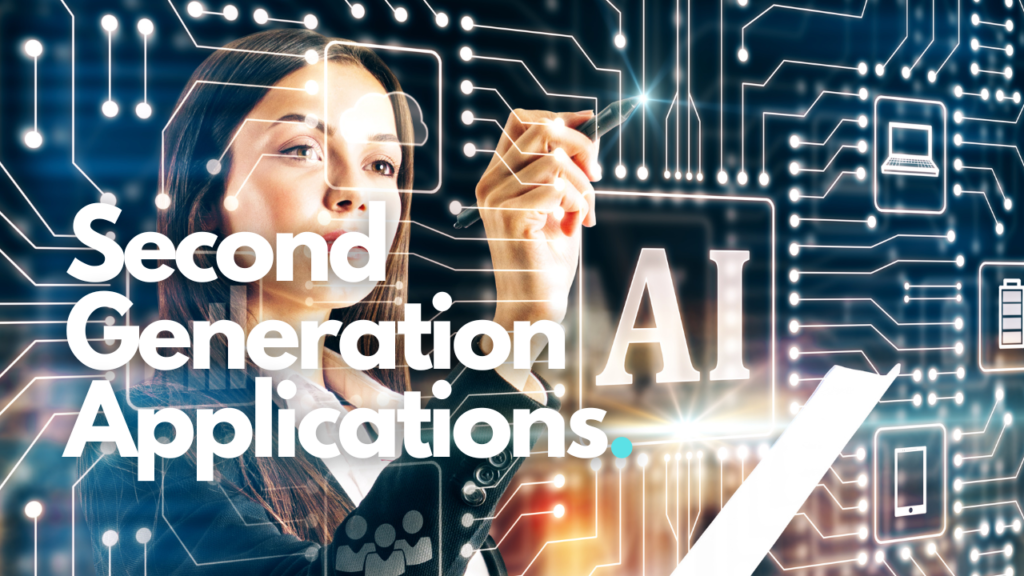
In the ever-evolving world of artificial intelligence, we find ourselves navigating the intriguing territory of first and second-generation AI applications. This landscape is akin to the unfolding chapters of a gripping novel, where innovation and potential collide, much like an unexpected plot twist. In this article, we will delve deeper into the concept of first and second-generation applications, exploring their implications for the field of AI, and envisioning what the future holds for this groundbreaking technology.
Table of Contents
Setting the Stage: First-Generation Applications
First-generation applications in AI are akin to the opening chapter of a story, introducing a new feature or capability in a single, isolated role. To grasp this concept, let’s consider a familiar example: the compass application on your mobile device. Its role is straightforward—it points you north, and that’s about it. The compass app is a solitary character in our AI narrative, serving a single, limited function.
These first-generation AI applications are vital as they serve as the building blocks of AI technology. They demonstrate the potential and power of AI but often lack the depth of integration that could truly revolutionize our digital lives. These standalone applications showcase the capabilities of AI but are akin to a single note in a musical composition, a solitary puzzle piece in a larger mosaic.
The Protagonists: Second-Generation Applications
Now, let’s move to the protagonists of our AI saga—the second-generation AI applications. These applications take the principles of first-generation applications and weave them into a complex narrative of functionality. Much like a well-crafted novel, they provide a more encompassing solution by using the feature or function in combination with other features or functions.
Let’s stick with the mobile device analogy. A second-generation application in the mobile world would take that humble compass and evolve it into a turn-by-turn navigation application. It becomes part of a larger ensemble, guiding us through the twists and turns of real-life journeys. It doesn’t just show you north; it shows you the way to your destination, taking into account your current location and the intricate road network.
These second-generation applications represent the true promise of AI. They transcend the boundaries of single-task limitations and offer a holistic experience. They anticipate, adapt, and interact with users in a way that feels as natural as a gripping dialogue in a suspenseful novel. These applications are akin to a complex, multi-faceted hero, capable of seamlessly merging AI features with other functions.
The Unfolding AI Narrative: Current State and Future Possibilities
So, where does AI stand in this tale? As of now, AI is predominantly in its first-generation phase. We have witnessed the emergence of isolated applications that showcase its potential, but the depth of integration and functionality is still a work in progress. Think of AI in its current state as a protagonist with immense potential but limited depth.
Yet, the beauty of this AI-driven narrative lies in its unpredictability and potential for growth. We are at a pivotal moment in AI’s journey, much like the opening chapters of a novel where characters and settings are introduced, but the true story is yet to unfold.
A Vision for Second-Generation AI Applications
So, what’s the plot twist we’re waiting for in the AI narrative? In a second-generation AI application, the magic lies in its ability to seamlessly merge AI features with other functions, crafting a holistic experience. Imagine an AI assistant that not only answers questions but also manages your schedule, controls your smart home devices, and predicts your needs with an almost eerie accuracy.
This second-generation AI application would be like the protagonist evolving from a one-dimensional character into a complex, multi-faceted hero. It would have the depth and breadth to serve as an all-encompassing solution for users’ needs.
For instance, think of an AI-powered personal assistant that knows your preferences, schedules your appointments, and even manages your smart home devices. It can adapt to your daily routines, providing relevant information and assistance. It’s like a character in a novel who evolves from a simple introduction into a multi-dimensional, central figure with depth and complexity.
In this AI-driven narrative, a second-generation application would transcend the boundaries of single-task limitations. It would anticipate, adapt, and interact with users in a way that feels as natural as a gripping dialogue in a suspenseful novel. It would be the unexpected twist that leaves us both amazed and potentially slightly unnerved.
The Future of AI: A Thrilling Climax
The future of AI is still unfolding, and the second-generation applications are yet to be written. But rest assured, when they arrive, they’ll be like the thrilling climax of a well-crafted mystery, leaving us satisfied and still hungry for more.
In this AI narrative, the possibilities are as limitless as the imagination of a skilled author. We’re on the verge of a new chapter in the story of AI, where the integration of AI features into broader applications will create a more encompassing and immersive experience.
Imagine a world where AI doesn’t just serve individual, isolated functions but seamlessly integrates into our lives, enhancing our day-to-day experiences. The second-generation AI applications will be the protagonists of this narrative, bringing depth, complexity, and a harmonious balance of capabilities to the forefront.
AI’s journey from first to second-generation applications is a tale of transformation, much like the characters in a novel evolving over time. As technology continues to advance, we can look forward to a future where AI plays a central role in our lives, much like a well-developed character in an engaging story. The future of AI holds the promise of a thrilling climax, leaving us both excited and slightly apprehensive about the possibilities it may unveil. In this unfolding AI narrative, the potential for innovation and transformation is as boundless as the creativity of a skilled author, creating a rich and engaging storytelling experience for all of us.


